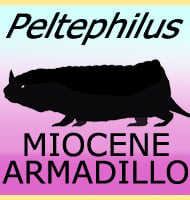Yoshi
In Depth Yoshi is a genus of metailurine sabre-toothed cat that lived in Eastern Europe during the late Miocene. Yoshi seems to have been adapted to be smaller light weight predators relying upon speed and agility to capture prey. Further Reading - A New Felid from the Late Miocene of the Balkans and the Contents … Read more

